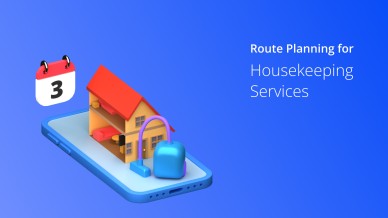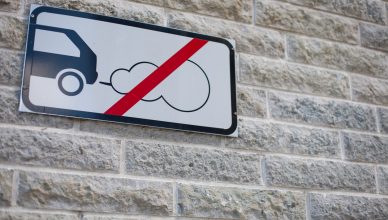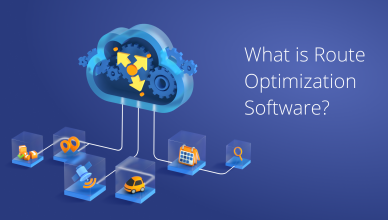Should you outsource your deliveries or keep it in-house? This is an age-old dilemma that has only become more evident with the rising consumer expectations due to the digital revolution. Consumers now expect same-day delivery or even same-hour delivery, thanks to Amazon. In fact, according to a report, 40% of shoppers say waiting for two days or more for delivery would prevent them from making the purchase. Also, as per McKinsey, around 25% of consumers are willing to pay significant premiums for the privilege of same-day or instant delivery.
So, before making a final decision, evaluate your business based on several factors, such as the capabilities, cost, business priorities, and scalability, and score yourself to pick a winner. Are you wondering how to do that? Here are three major points to help you get started and make your decision easier.
#1 Controlling Power
According to a survey, 96% of shoppers prefer using the same retailer again if the delivery experience was positive. This means that it is critical that you offer a great customer experience to keep your customers hooked to your brand and encourage repetitive purchases.
Keeping your delivery operations in-house can help here as you’ll be in the loop with everything your drivers do and have an actionable part in the entire process. This would help you offer an excellent quality service as well. Since you’ll have the power to monitor your employees’ work, flexibility, and productivity, the reliability of your workforce will also increase.
Keeping deliveries in-house also facilitates better communication between the fulfillment and customer service teams, which can help you identify and fix even the smallest delivery problem quickly and efficiently. And, if you have a GPS tracker in place, you can bolster your control over your operations further.
GPS tracking software helps you monitor your vehicles and the drivers’ activities on the road in real-time. Whether they are stuck somewhere due to a vehicle breakdown, making personal stops, idling the vehicles, or even driving aggressively, you’ll know about it as it happens. So, you can fix any issues immediately and avoid possible delivery hindrances.
On the flip side, you’ll have little control over your delivery operations when you outsource to a third party delivery services provider. This could have a severe impact on your business. For example, you won’t know how well-trained, professional, and knowledgeable the drivers are and if they can and will deliver the experience your customers want. At least, with in-house, you can train your delivery staff as per your business standards.
However, some delivery service providers can offer you full control over your deliveries. For example, you can provide specific instructions about how an item should be handled or the time window in which it should be delivered. But, remember that staying in control also means you would solely be responsible for everything that happens, including anything bad that could happen.
So, if you want to outsource your deliveries, don’t just hand it off to a third party. Have people in-house first who know how to manage third parties.
Want To See For Yourself How Route4Me Can Boost Your Profits?

#2 Scalability
Where do you see your business a year from now? Do you want to be in the same position you are in now or do you want to grow manifold? This will define your requirements.
Growing a food delivery business or any other delivery business is hard. And, if you want to grow rapidly, you may want to go for third-party delivery. Scaling up your delivery operations in-house comes with hefty expenses, such as additional labor and vehicle costs, and extra transportation costs. And, if you don’t have enough capital available, covering these costs will be tough.
Scaling a company also comes with a steep learning curve and may take considerable time and resources to manage and get the new process and deliveries streamlined. If your drivers are not entirely familiar with the area where you’ve recently started getting customers, you’ll be toast.
However, if you use a third-party delivery service provider with the expertise and experience to fulfill your requirements and knowledge of the area you intend to cover, then you’ll have very little to worry about. You won’t have to tell them how to run the operation as they’ll already know how to do it right. Of course, they would still require some time to learn the nature of your business to make the process even more efficient. Also, you can rest assured of the delivery personnel because their employer has already trained them. Furthermore, the third party is liable for the staff.
Yet, scalability isn’t a headache for in-house delivery companies that adopt a route optimizer. A route optimization software makes route planning and management efficient by optimizing the routes so that the delivery drivers can make more stops in less time. So, you can serve more customers and cover new areas, without hiring additional staff and buying more vehicles.
The advanced route planners even come with territory management, interactive map, and color-coding features to help you identify potential customers, tap new areas, and assess your capabilities strategically, without spending a dime.
Read how you can increase your profit margin, without purchasing additional delivery vehicles and hiring new resources.
#3 Costs
Keeping delivery operations in-house means you have to bear the fixed costs, such as driver wages, insurance premiums (which are, in fact, higher than regular insurance), warehouse storage space fees, and other capital expenses, including vehicle purchasing costs. Then there is also the variable expenses, such as parking fees, fuel, and, most importantly, vehicle maintenance costs. And, the bigger the bill is, the smaller your profits will be.
Does this mean that outsourcing the delivery of goods is the solution to bring down costs?
To some extent, yes. When you use a delivery service provider, you just need to pay a commission per order to the third-party service provider. You don’t have to worry about fixed and variable costs, as everything will be borne by the service provider. You can then invest the saved money in your core areas, products, and services and develop your business.
However, things are not as rosy as they look. Some third-party food delivery companies charge up to 35% of the order price. So, you need to ensure that the delivery company you intend to hire does not ask for a heavy commission which could turn out to be more expensive, even after taking into account staff, wages, and vehicle costs. In-house delivery will still be cheaper in such cases. Also, watch out for setup costs, hidden fees, and onboarding expenses, such as the costs of integrating a third-party system into your store.
Luckily, route optimization software can help, even if you want to keep deliveries in-house. You can plan well-optimized and cost-efficient routes in just 30 seconds, while factoring in weather, traffic, one-ways, left-turns, under-construction roads, height, load, weight, sunrise, sunset, and many other critical constraints. Simply upload the list of customer addresses into the system and set some parameters. That’s it.
Also, a route planner app comes with a powerful reporting and analytics feature which helps you track all transportation and related expenses to keep your costs under control. But, don’t settle for a free mapping software or tool as such tools don’t come with any such advanced features.
Conclusion
There is no one-size-fits-all solution because your choice depends on your business goals and capabilities which would change as you grow and time passes. So, you may find partnering with a third-party delivery service provider beneficial today to counter the same-day delivery challenges, but later find that switching back to in-house delivery is more profitable than outsourcing. It’s advisable to evaluate your business and requirements regularly to ensure what you chose yesterday is still helping you deliver your customers’ needs quickly and cost-effectively today.
Want To See For Yourself How Route4Me Can Boost Your Profits?







